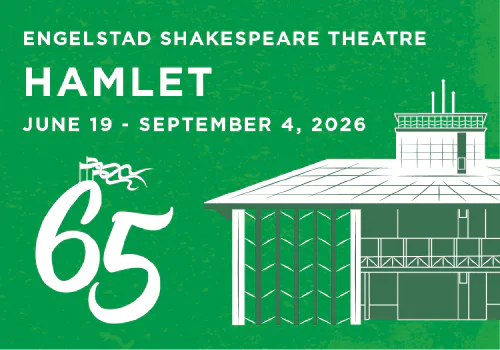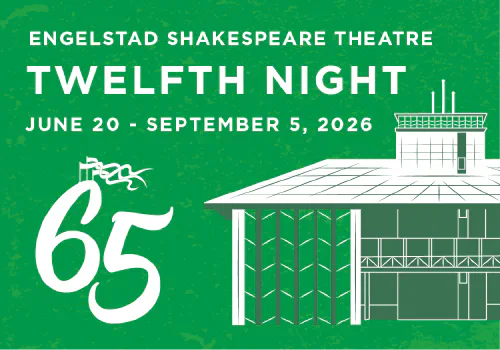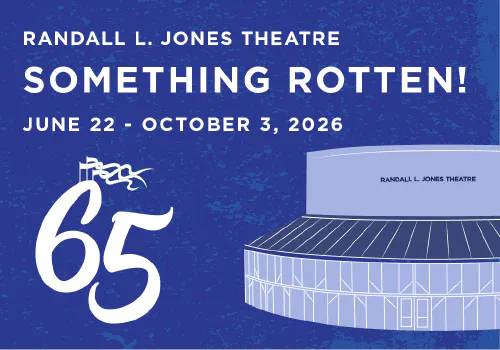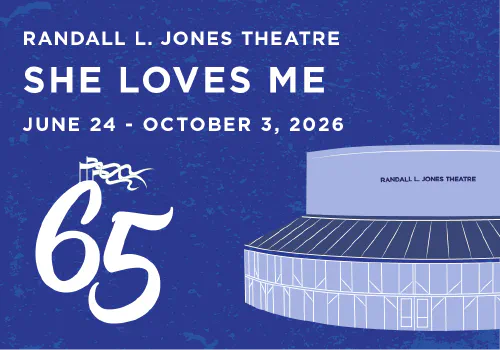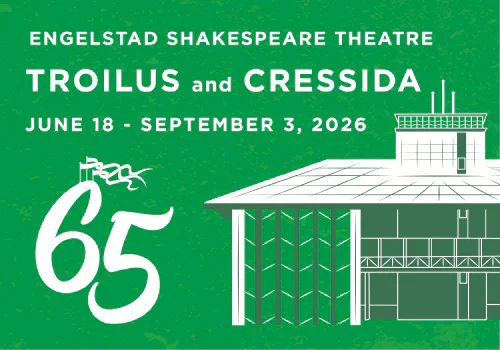By Ace G. Pilkington
Henry IV Part 1was probably written and acted in 1596. It is a sequel to Richard II, but it is hard to imagine two more different plays telling parts of the same story. While Richard II is entirely in verse, essentially true to history, and mostly about the aristocracy, Henry IV Part 1 mixes prose and poetry, turns historical fact into Shakespearean fiction, and includes everybody. Indeed, it is hardly an exaggeration to say that Shakespeare has put all of England in one play.
As usual for history plays (and even for tragedies such as Macbeth), Shakespeare had done his homework. His primary source for Henry IV Part 1 was Holinshed’s Chronicles of England, Scotland and Ireland, but the way he arranged his material (and some of the material he arranged) suggests he also used (among other things) John Stow’s Annales, Samuel Daniel’s epic poem about the Wars of the Roses, and two anonymous, humorous plays—Woodstock and The Famous Victories of Henry the Fifth.
In those sources Shakespeare found the idea that Hal and Hotspur were the same age (Hotspur was, in fact, two years older than Hal’s father, Henry IV) and that Hal spent most of his time hanging out in taverns with half the riffraff of London. However, the frolicsome prince who joins that disreputable old con man, Falstaff, in the tavern is not much like the religiously bigoted, politically adept young man who, in plain historical fact, led troops in Wales while he was still in his teens and ran the country when his father’s illness incapacitated him mentally as well as physically (Desmond Seward, Henry V As Warlord[London: Sidgwiek & Jackson, 1987], 34 and 27-28).
But, of course, Shakespeare’s version is more interesting dramatically. It gives us two young rivals fighting, eventually, for the throne of England. It gives us a clear picture of all of England, switching from palace to tavern and back again while suggesting scandalous similarities between kings and highway robbers. It also gives us, with Shakespeare’s inimitable sleight of hand, the true essence of the relationship between Henry IV and his son even though it starts from a false version of history.
They were, in fact, rivals, often exasperated with each other, and Hal did feel uneasy about the way his father had gained the crown by usurping Richard and having him murdered; Hal may even have loved Richard II more than his own father. If he didn’t hide in the tavern with his fat substitute parent, he certainly put plenty of emotional distance between himself and Henry IV, and he sometimes acted as though he would rather have been someone else’s son.
Still, of all Shakespeare’s historical inaccuracies in Henry IV Part 1, Falstaff is undoubtedly the largest. John Falstaff was based on the historical character John Oldcastle, Shakespeare going so far as to use Oldcastle’s name (Hal’s pun on it remains in the first scene) in the first performances of the play. However, William Brooke—seventh Lord Cobham, Elizabeth I’s Lord Chamberlain, and John Oldcastle’s descendent—forced a change, and Oldcastle has been Falstaff ever since (except in Oxford University’s 1986 Complete Works).
In any event, apart from a friendship with that troublesome Prince Hal who became the ambitious King Henry V, Oldcastle and Falstaff were very different people. Oldcastle, an early Protestant fanatic, was convicted of heresy by the equally fanatical Catholic courts in 1413, but “execution was stayed at the behest of the king who endeavored personally to reconvert his friend to orthodoxy” (Peter Saccio, Shakespeare’s English Kings: History, Chronicle, and Drama [New York: Oxford University Press, 1977], 71-72). Oldcastle next escaped from the Tower. The “escape may have been arranged with the connivance of the king” (James Hamilton Wylie, The Reign of Henry the Fifth, 3 vols. [Cambridge: Cambridge University Press, 1914-1929], I 260). If so, Henry V was not well rewarded for his action. The determined Sir John Oldcastle then organized a revolt and conspiracy whose goal (in addition to wholesale religious and social changes) was the murder (or at least the seizure) of King Henry V and his brothers (Seward 43-44). The revolt was foiled, but Oldcastle escaped “and though pardons were afterwards offered . . . he would not come in to claim them” (Wylie I 277). In 1417, while Henry V was still fighting in France, the thirty-nine year old knight (A. R. Humphreys, ed., The Arden Shakespeare: The First Part of King Henry IV[London: Methuen, 1960], xli) was taken and “roasted alive as he swung in chains from a gibbet” (Seward 171; see also Ace G. Pilkington, Screening Shakespeare from Richard II to Henry V[Newark, N.J.: University of Delaware Press, 1991], 150-51).
Anyone less likely to die for his religious beliefs than John Falstaff is hard to imagine, but he was a kind of rebel against “old father Antic the law” (1.2.59), and his Shakespearean incarnation is so much more fun than his historical original that surely no one would care to trade. It is Falstaff, after all, who sticks pins in the big balloons of heroism and patriotism, expressing the common man’s view of war when he points out that honor and death come together. It is Falstaff who can lie and laugh his way out of any difficulty, and Falstaff who enjoys life so much and makes us enjoy it with him so thoroughly that, like Prince Hal, we cheerfully forgive him all his sins. As Anthony Quayle, one of this century’s most famous Falstaffs puts it, “he’s a monster. He’s a desperate character and infinitely lovable" (Judith Cook, Shakespeare’s Players: A Look at Some of the Major Roles in Shakespeare and Those Who Have Played Them[London: Harrap, 1983], 73).
Falstaff is the counterweight who helps Shakespeare make the point that the middle ground of honor—somewhere between the obsessed Hotspur and the contemptuous Sir John—is the place for a wise young prince to be. For Hal, Falstaff is also the chief example of that “red-blooded amoral behaviour . . . which has to be subordinated if he is to achieve the self-control required of a king" (Stanley Wells, Shakespeare: A Life in Drama [New York: W. W. Norton, 1995], 142). But subordinated is not eliminated, and Hal is stronger for having Falstaff with him, to worm his way into our affections and warm all our hearts.
When the courageous Hotspur and the cowardly Falstaff supposedly lie dead together at the end of the play, it is Falstaff’s death that grieves us, for, like Hal, we can better spare the better man. No wonder Falstaff also appears in Henry IV Part 2 and The Merry Wives of Windsor. No wonder he has been the subject of operas by Holst, Nicolai, Salieri, Verdi, and Vaughan Williams. No wonder he inspired Robert Nye’s huge novel, Orson Welles’s brilliant film, and Edward Elgar’s superb symphony. No wonder “his visual image, red-cheeked, white-bearded, fat bellied, and big-booted, has been the subject of many paintings and of pieces of sculpture, has been propagated in porcelain, and has adorned inn signs and beer mats” (Wells 143). No wonder American poet Richard Wilbur in his poem “Up, Jack” makes Falstaff’s resurrection at the end of the play a symbol of well-being for Hal and all the audience: “Great Falstaff (rising) clears his thirsty throat / And I’m content, and Hal is hale again” (New and Collected Poems[New York: Harcourt Brace Jovanovich, 1988], 353).




